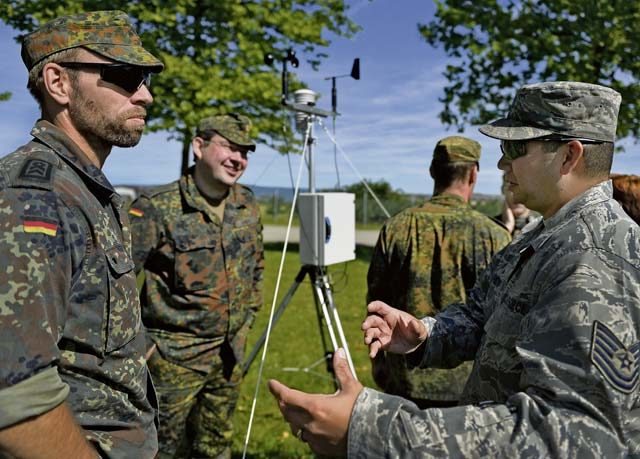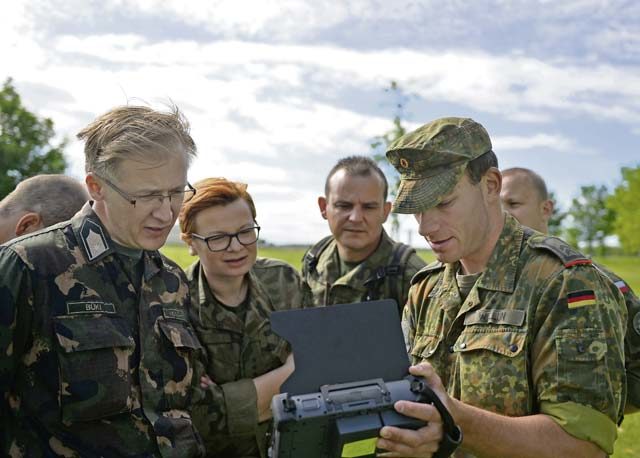
WIESBADEN — The 7th Weather Squadron kicked off a weather-related exercise with NATO allies June 12 in Wiesbaden. This is the second year the squadron invited NATO allies for Exercise Cadre Focus and the first year the training took place in Wiesbaden.
The 7 WS partnered with allies from Germany, Poland, and Hungary to enhance their ability to work together in the field. The training event also served as a re-certification course for Airmen of the squadron.
Through Cadre Focus, Airmen of the 7 WS aimed to enhance their capability to provide weather support for U.S. Army operations in Europe. Although the squadron falls under the Air Force’s 435th Air Ground Operations Wing, its mission is tied to the Army.
“The 7 WS mission is to support U.S. Army Europe; we go where they go,” said Master Sgt. Steven Hollatz, 7 WS noncommissioned officer in charge of education and training.
Hollatz serves as the leading NCO for the current training event.
“It’s a training exercise that we try to do at least twice a year,” he said. “It’s designed to train on some of the basic soldier skills that we don’t get through the Air Force. We train on them so we can be proficient and work closely with some of our Army counterparts.”
The training began with classes which included topics such as weather codes, equipment operation, casualty evaluation, and requesting medical evacuation. Throughout the week, exercise participants are scheduled to apply what they learned in the classes through field training.
The field training portion on Cadre Focus includes land navigation, moving while under fire, and a vehicle rollover scenario.
At the end of the week, participants from the NATO partners are slated to showcase their equipment. The intent of the exhibit is to exchange information between the allies and understand how they can work together more efficiently in joint missions.
Hollatz stressed the importance of joint exercises, saying that understanding one’s allies is crucial to mission success.
“It’s a really good opportunity to show them how we train and what we do,” he said. “We’re also getting them to show us what they do. It just opens that dialogue and gets us used to working together. This is the time that we want our NATO partners to talk about their stuff, what they’ve got. It’s good to know what their capabilities are and what our capabilities are.
We’re here in Germany basically to support NATO,” he continued. “If NATO goes to war, we’re going to fight together. So it makes sense to train together.”



